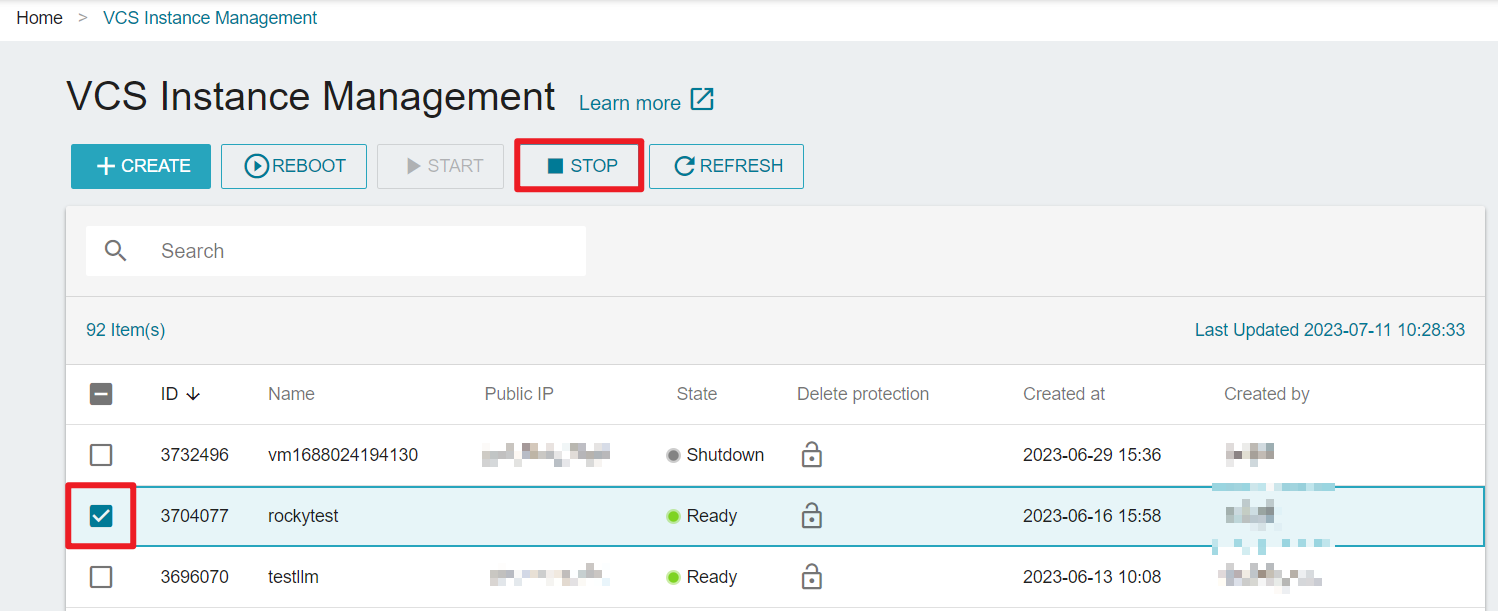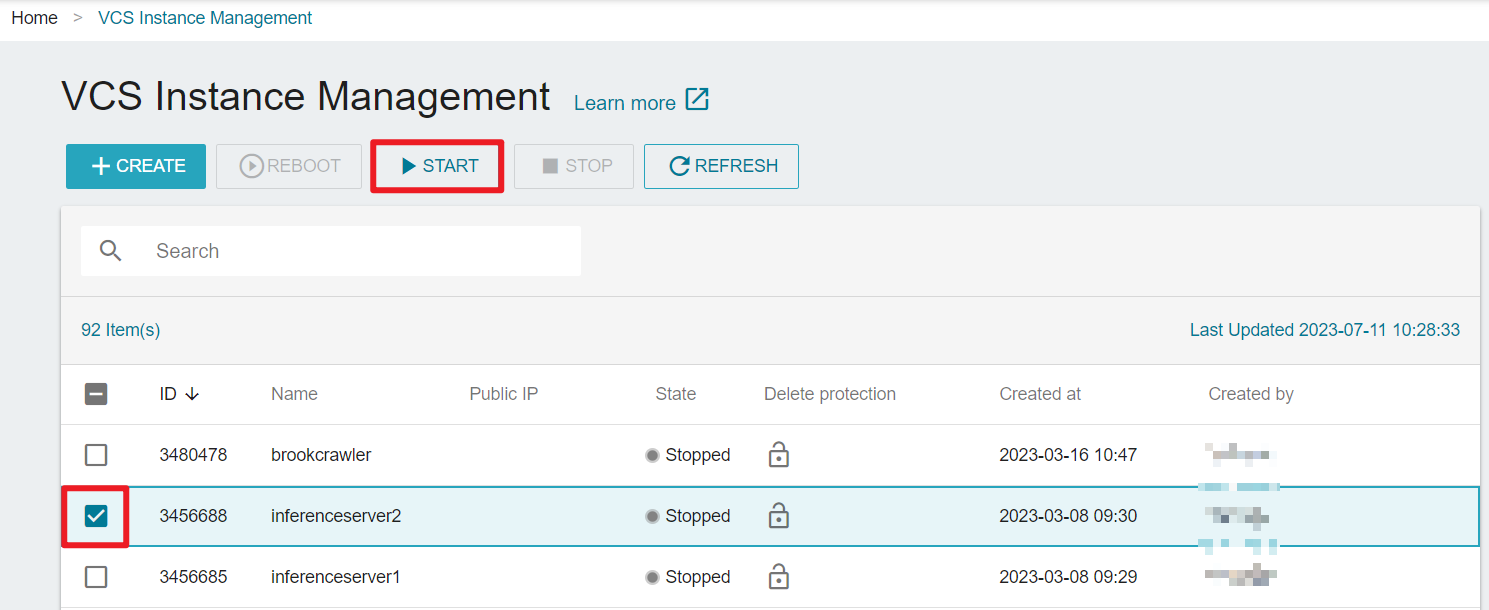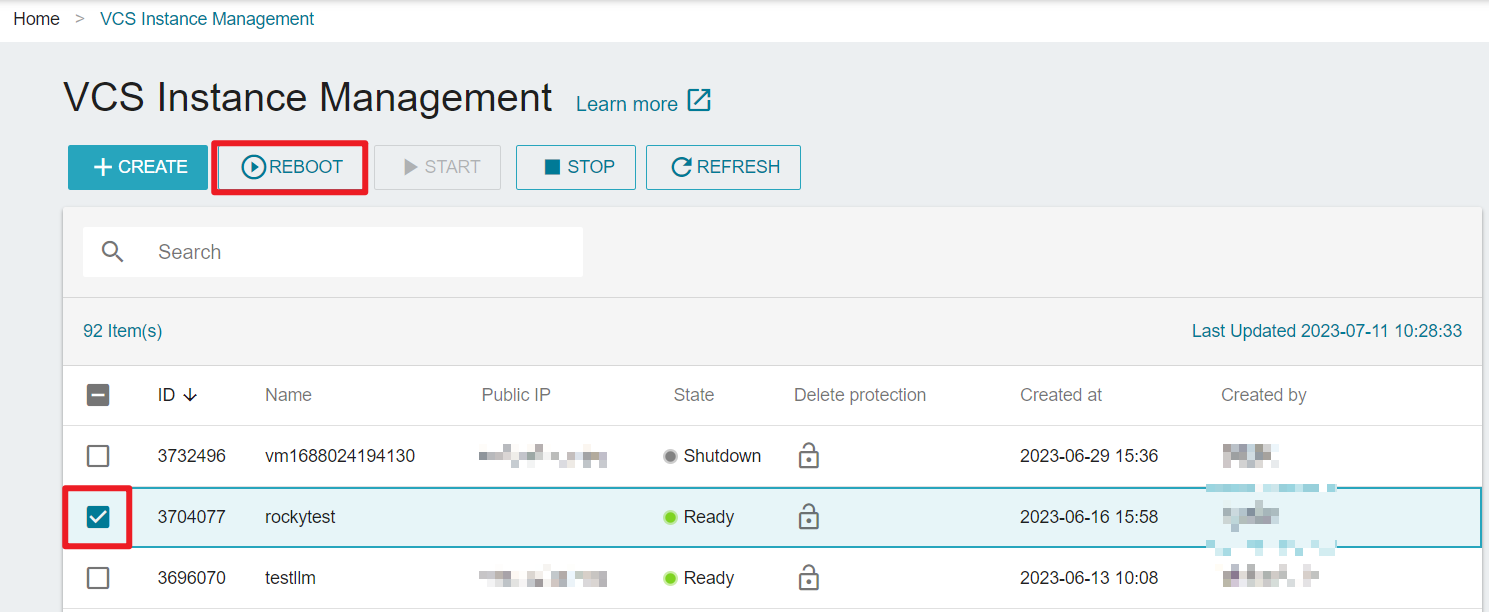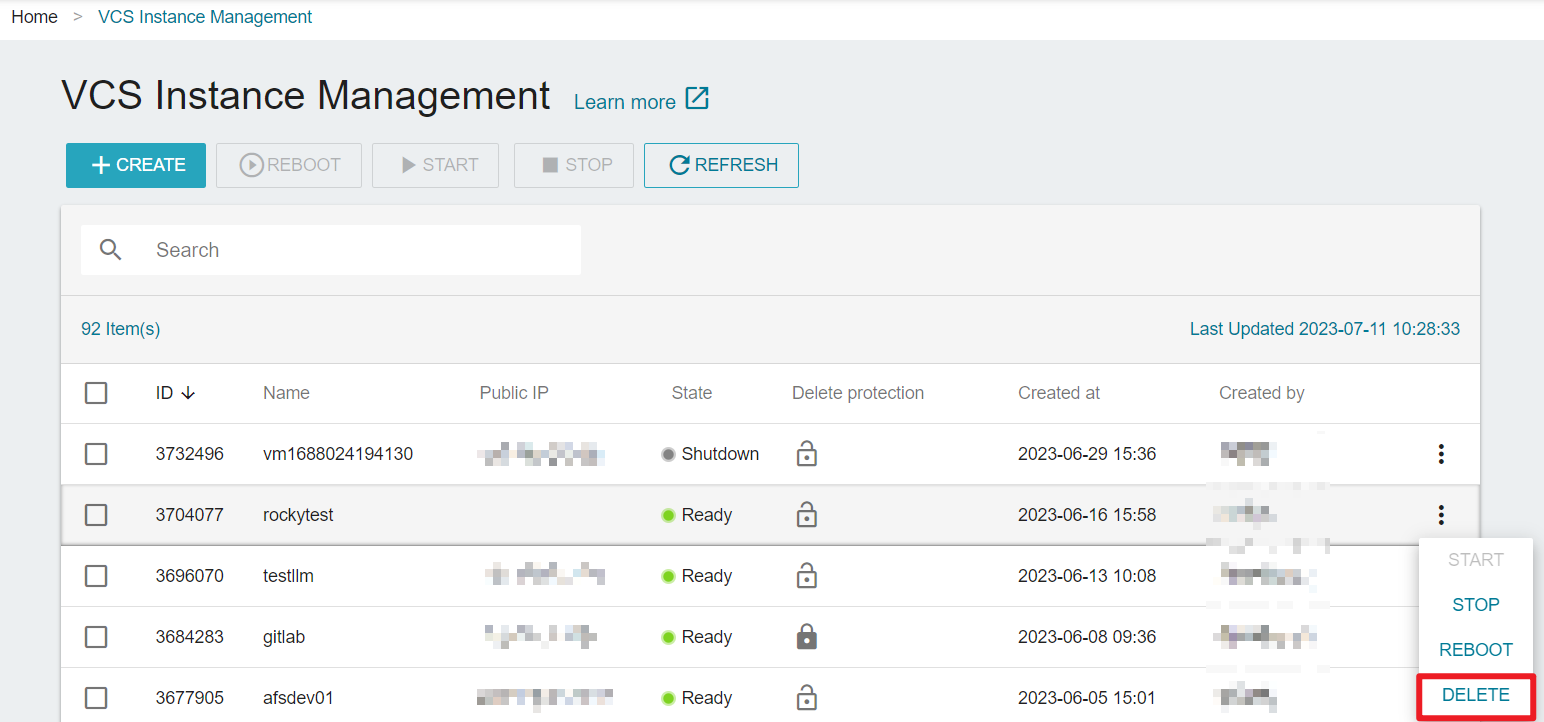Stop/start/shutdown/restart/delete an instance
You may stop, start, shutdown, restart, and delete Virtual Compute Service (VCS) instances according to your needs and scenarios.
For the permission differences in VCS instance between Tenant Admins and Tenant Users, please refer to User roles and permissions.
For more information regarding state transitions, billing, and the impact of service operations on VCS instances, please refer to VCS instance lifecycle.
Stop an instance
If you will not use the instance for a period of time and want to keep the resources, you can click STOP to shutdown and release the instance resources. The VCS instance will show Stopping state, and prepare to enter the Stopped state, which means that the resource has been released. In the Stopped state, the instance will no longer be billed.
Please do not delete the instance during the Stopping state. Otherwise, the process will be affected and cause an Error in the instance.
- TWAI Portal
- TWCC CLI (TBD)
- Go to the VCS Instance Management page > select the instance > click STOP at the top.

- Or click next to the instance > click STOP.
- Or enter the VCS Instance Details page > click STOP at the top.
The operating restrictions after stopping are as follows.
- Connect and login
- Assign/detach public IP
- Attach/detach VDS Data Disk
- Create instance images
- Attach/detach Auto Scaling and Load Balancing Service
- Resources that will be released after the instance is stopped: GPU, CPU, vCPU, memory, OS disk, Floating IP (New Floating IP will be acquired after the instance is started again).
- Resources that will be kept after the instance is stopped: Data Disk, Auto Scaling, Load Balancing, Static IP. The above resources will be automatically attached back to the instance after the instance is started again.
- Except for the data in memory, which will be erased, all data stored in the instance will be reserved.
Please do not delete a VCS instance when it is in the Stopping state, otherwise it will affect the system processing and cause and instance Error.
Start/restart an instance
To resume and use a stopped instance, or to start an instance that has been shutdown, please click Start. The state of the instance will be Starting in the process of reallocating resources, and prepare for entering the Ready state again.
- TWAI Portal
- TWCC CLI (TBD)
- Go to the VCS Instance Management page > select the instance > click START at the top.

- Or click next to the instance > click START.
- Or enter the VCS Instance Details page > click START at the top.
Most stopped instances will be created on a new physical host when they are started again.
Reboot an instance
To reboot (turn off and then turn on) an instance in the Ready state, please click Reboot. The state of the instance will be Rebooting in the process of rebooting, and prepare for entering the Ready state again.
- TWAI Portal
- TWCC CLI (TBD)
- Go to the VCS Instace Management page > select the instance > click REBOOT at the top.

- Or click next to the instance > click REBOOT.
- Or enter the VCS Instance Details page > click REBOOT at the top.
Unlike stopping instances, after rebooting the instances, except for erasing the memory data, resources are not released back to the resource pool (including floating IP), and the stored data are retained and can still be used after rebooting.
Shutdown an instance
After performing a shutdown, the instance will be in the Shutdown state. In the Shutdown state, the instance will continue to be billed.
TWAI portal and TWCC CLI do not support the shutdown function, please operate it in the instance:
- Linux instance: You can execute
sudo shutdownorsudo poweroff -fin the instance to shut it down - Windows instance: You can use
shutdown -s, or click the shutdown button at the bottom left of the desktop to shut it down.
The operating restrictions after shutdown are as follows.
- Connect and login
- Assign/detach public IP
- Attach/detach VDS Data Disk
- Create instance images
- Attach/detach Auto Scaling and Load Balancing Service
Unlike stopping instances, after shutting down the instances, except for erasing the memory data, resources are not released back to the resource pool. The stored data are retained and can still be used after starting again.
Delete an instance
To permanantly delete an instance and no longer use it again, please delete the instance.
Other considerations for deletion:
- The data in the operating system (boot) disk will also be permanently deleted. If you need to keep it, you can create an instance image.
- The data disk will be automatically unmounted and kept.
- TWAI Portal
- TWCC CLI
- Go to the VCS Instance Management page > click next to the instance > Click DELETE.

- Or go to the VCS Instance Details page > click DELETE at the top.
Command
twccli mk vcs -s # Instance's ID
twccli ls vcs # View result
Example
- Delete the VCS instance with ID
937651, and check if it is deleted.
twccli rm vcs -s 937651
twccli ls vcs

- A user can only create and delete virtual computing entities 10 times in a minute.
- If Delete Protection is enabled, you cannot delete the resource directly, please disable it first and then delete it again.